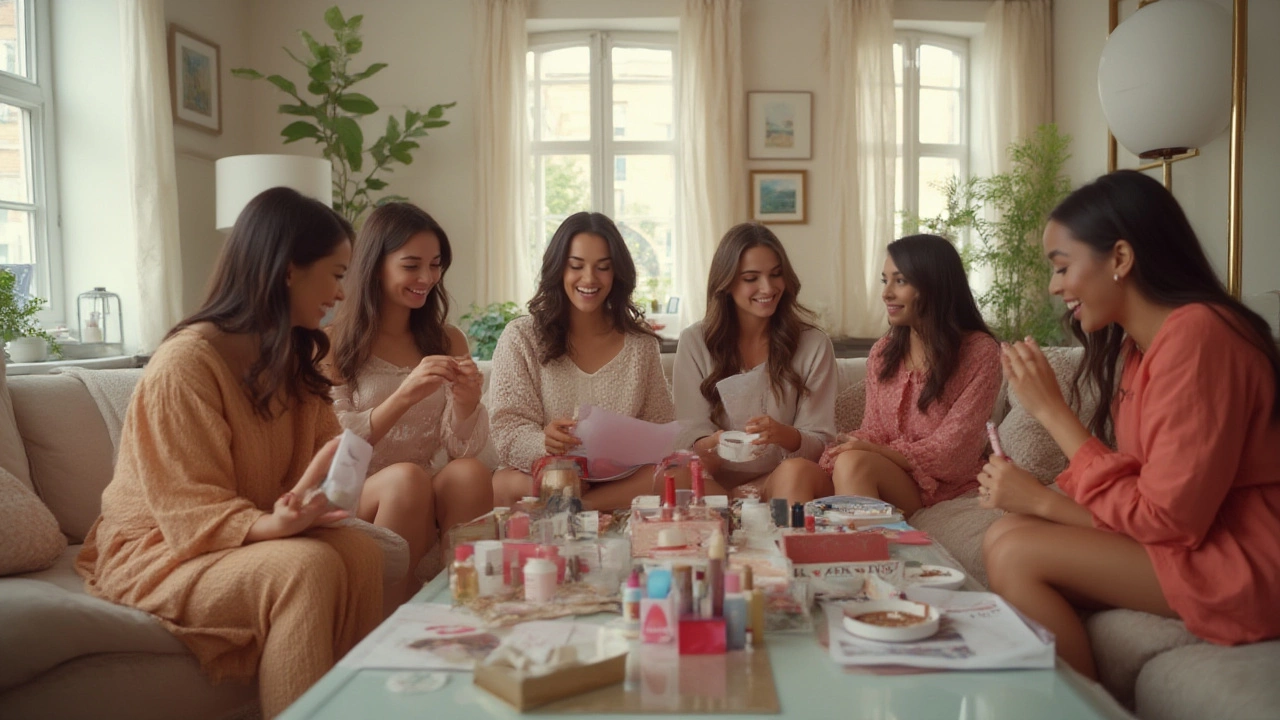Something strange happened to a beauty company that used to be on everyone’s lips: Birchbox. It’s wild to think that a brand considered the darling of the subscription world became a cautionary tale in just a few short years. At its peak, Birchbox delivered surprise joy—in the form of tiny tubes and pots—straight to the doors of millions. People obsessed over those boxes, swapping products, and Instagramming their latest haul. But now, if you search for Birchbox today, you’ll mostly find nostalgia, a few Reddit threads speculating about the company’s fate, and a splash of skepticism. The question is, how did Birchbox lose its magic and where did it all go off the rails?
The Start of a Beauty Revolution
If you weren’t into online beauty in 2010, you might not realize how groundbreaking Birchbox was at launch. Founded by Katia Beauchamp and Hayley Barna, two Harvard Business School grads, it was the first to turn beauty product discovery into a monthly treat. Back then, nobody else was really making beauty fun, social, and affordable all at once. Birchbox’s model was simple: pay a small fee (originally $10 a month), answer a few questions about your beauty preferences, and every month you’d get a carefully curated box featuring sample-sized products from buzzy brands. The idea totally blew up. By 2014, Birchbox claimed over a million subscribers and had raised more than $70 million in funding. Their retail partners—Benefit, Kiehl’s, Stila—were brands people actually wanted. Finding a new favorite lipstick or shampoo became ridiculously exciting.
Birchbox didn’t stop at boxes. In 2014, they opened their Manhattan flagship store—wall-to-wall samples with beauty stylists everywhere, and a “Build Your Own Birchbox” bar where shoppers filled boxes with whatever caught their eye. So, Birchbox wasn’t just selling products; they sold an experience, which was rare at the time. That same year, the company made nearly $100 million in revenue and was valued at half a billion dollars. Glossy magazine profiles gushed about their savvy leadership, and the world braced for the beauty industry to be disrupted forever. Little did anyone know, the party was about to go sideways.
Warning Signs: Growth Pains and Missed Moves
For all the buzz, cracks started forming beneath Birchbox’s glossy exterior. The business, as it turns out, was trickier to scale than anyone expected. Curating those personalized boxes every month meant heavy logistics—partnering with dozens of brands, managing unpredictable product samples, and keeping the thrill alive for fussy customers. Birchbox fans had an eye for detail, so even a slight misstep (say, repeat samples or out-of-season products) led to angry tweets. Worse, many people simply wanted the free samples, then bailed before making any full-size orders—the exact opposite of Birchbox’s dream.
Competition caught on fast. Sephora and Ulta launched points-based rewards and sampling services in-store, plus glossy newbies like Ipsy, Allure, and FabFitFun sprouted up everywhere. These upstarts focused on influencer connections, flashier packaging, and bigger, more expensive samples—stuff that looked good on Instagram. Where Birchbox aimed for moderate, practical luxury, Ipsy went for high-impact wow. Suddenly, that signature kraft box and small samples looked stingy.
According to a 2018 Glossy report, only about 35% of subscribers were converting their samples into purchases—nowhere near enough to make the retail side fly. Executives tried luring shoppers to their online store, but Amazon had already swallowed up beauty retail, offering more selection and free Prime shipping. Loyalty started to crumble as customers chased better deals or just lost interest. Birchbox also bet big on men’s boxes, which never caught on in the same way.

Acquisitions, Restructuring, and Tumult
Facing losses, Birchbox started to look for lifelines. In 2018, Walgreens bought a minority stake in Birchbox, with a plan to stock Birchbox-branded displays in hundreds of stores. The expectation was that millions of casual Walgreens shoppers might turn into Birchbox fans. Instead, the partnership fizzled—shoppers didn’t flock to the in-store displays, and the subscription business kept shrinking. A year later, Katia Beauchamp herself admitted the company had to lay off even more staff, refocus on its core digital service, and “make tough decisions” about its future. The company also left Europe, shuttering operations in Spain, France, and the UK one after another.
Around 2022-2023, things got weirder. The pandemic didn’t help—people weren’t going out, so makeup felt pointless. At-home spa days boomed, but Birchbox’s product lineup stayed largely stuck in pre-pandemic vibes, with lots of mascara and lipstick. Tech costs soared, brands raised their prices, and Birchbox stopped being able to deliver the same value. Social media posts revealed growing frustration around shipping delays, missing boxes, unhelpful customer support, and—worst of all—recurring charges for boxes that never arrived. By late 2023, angry subscribers took their stories to social media and the BBB. A group called FemTec Health swooped in to buy Birchbox during this chaos, promising to “reimagine” the platform as a health-and-wellness destination, but by mid-2024, even FemTec quietly shuttered what was left.
In a candid interview for Business of Fashion, Beauchamp reflected,
“The subscription model is hard—if the experience isn’t perfect, people will cancel, and you lose all momentum.”Her words capture the challenge they faced: keeping people surprised, delighted, and loyal every month is a far tougher job than it seems.
Lessons for Beauty Fans and Startups
If you’re hunting for the next great beauty subscription, or maybe dreaming up your own startup, Birchbox leaves you with a pile of helpful tips and hard truths. The beauty industry is brutal—customers want what’s new, Instagrammable, and absolutely tailored to them. Standing still means falling behind. Birchbox lost ground by not chasing trends fast enough (think: skincare and inclusivity), and by sticking too closely to a format they invented years earlier.
For future beauty boxes to thrive, they need two things: killer partnerships and the ability to turn subscribers into loyal shoppers who buy full-size products. Ipsy, for example, won over Gen Z with influencer swag and personalization powered by AI. Subscription boxes can swing big or fall flat. Want to increase your odds? Focus on curating experiences, not just stuff. Little touches—mini tutorials, exclusive discounts, even QR codes for quick tips—really set a box apart.
Here’s a quick look at how the big players compared on value and retention during Birchbox’s last days.
| Brand | Avg. Price/Box | Sample Size | Subscriber Peak | Est. 2023 Subscribers |
|---|---|---|---|---|
| Birchbox | $15 | 5 sample minis | 1.2M | Below 175,000 |
| Ipsy | $13 | 5 deluxe samples | 3.5M | 2.5M+ |
| FabFitFun | $54.99 (quarterly) | 8-10 full-size | 1.5M | Just over 1M |
If you’re still craving that monthly beauty surprise, do your homework. Check recent reviews, read the fine print, and start with a one-time box if you can. If a brand’s social media is full of complaints, steer clear. Once in a while, a forgotten box will pop up on eBay—and for some loyalists, that’s as close as you’re going to get.
Birchbox didn’t just change how people tried makeup; it made everyone expect more from their beauty brands. Its fall is a loud reminder: thrill and trust aren’t easy to deliver, but if you do, the rewards last a lot longer than a single box.
